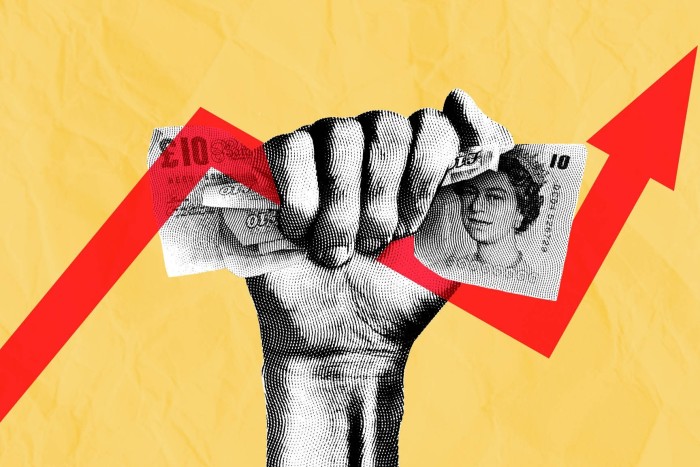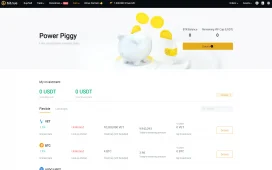I’m feeling good, to borrow a line sung by Nina Simone, about small biotech businesses finding new cures for old disorders.
It seems like every day we are told of innovative ways to use the body’s immune system, stem cells and genes to combat diseases from dementia to diabetes. And who hasn’t heard about Wegovy? The weight-loss drug could cut the risk of death in people with obesity and cardiovascular disease by 18 per cent; it’s turned its maker Novo Nordisk into one of Europe’s most valued pharma companies.
A new age in life sciences is dawning, triggered by increasing healthcare needs and ageing populations. We saw what can be done during the pandemic when several vaccines emerged, all based on new technologies, and were approved for use on humans in less than a year. Pre-pandemic, it would have taken a decade to develop and bring a vaccine to market.
The risks of backing biotech are the same — it can feel like catching a falling knife sometimes (note how, post-pandemic, the market stalled as interest rates rose). But now small-cap life sciences companies are again applying to investors for cash for new projects: drug developers raised $6.2bn in US equity capital markets in January alone. And big pharma groups are once more picking off emerging groups in an effort to replenish pipelines as patents of old blockbusters expire.
I’m cheerful about the picture in the UK, too, and I’m not alone. “The UK is an international leader [in biotech] on any metric you care to look at,” argues small and mid-cap broker, Peel Hunt.
In March, London-based researchers extracted stem cells in amniotic fluid to develop organoids, miniature organs and tissue cultures that medics say could revolutionise our understanding of human development and disease.
Last November, the UK became the first country to approve a treatment using Crispr technology, based on the bacterial immune system, for sickle cell disease.
In January, Japan’s sovereign development bank invested in UK life sciences for the first time through 4Bio Capital, a UK venture fund that backs advanced treatments such as cell and gene therapies. Dima Kuzmin, 4Bio’s managing partner, claims the UK has the top biotech ecosystem in Europe. “And yet it continues to be under-appreciated as an investment opportunity.”
The trouble is we’ve seen new dawns and bull markets in life sciences before.
During the pandemic, shares in Aim-quoted Synairgen, which came up with a treatment for Covid, rose 25 times. Shares in test maker Genedrive jumped 2,000 per cent to 150p plus.
Then the value of future cashflows fell as interest rates rose. Investors reassessed the cost of equity and cash tied up in biotech’s “growth stocks”, the titches developing unproven medicines that might take years to become commercial.
Genedrive’s shares are down to about 5p. That’s worth remembering as the biotech market revives on hopes that rates have plateaued despite the looming US election and continued geopolitical ructions.
Still, if I were to put a little money where my pen is, where would I start? The mood music from Aim, my traditional hunting ground, is funereal. Aim biotech companies complain of liquidity constraints, high regulatory costs and limited access to funding. European stock market investors are risk-averse and wedded to short-term profits and cash returns, they moan. RedX Pharma, which has shrinking revenues and mounting losses, is the latest to announce plans to quit the junior market.
Some UK groups have switched to Nasdaq, where investors have deeper pockets and will make big bets on fledgling companies. But only companies that credibly address high unmet needs will succeed on Nasdaq, says Ailsa Craig, manager of International Biotechnology Trust (IBT).
A venture capitalist has a point when he tells me stock markets are largely designed to assess the commercial, not the scientific, potential of new medicines. It may be worth paying specialist biotech managers who can tell good science from bad and pick out emerging stars.
Peel Hunt is a fan of Syncona, a Guernsey-based listed company created out of the Wellcome Foundation’s VC arm. It has a concentrated portfolio of about 20 cell and gene therapy start-ups with treatments in early and late stage trials. The company, according to the investment bank, “is doing much of the heavy lifting in commercialising the UK’s excellent Life Sciences sector”. Sycona has delivered a 10-year internal rate of return of 26 per cent since inception. However, total returns have fallen 40-odd per cent since 2021 and shares are close to 30 per cent discount to assets.
Paul Angell, head of investment research at platform AJ Bell, plumps for Worldwide Healthcare Trust. The managers at New York-based OrbiMed — the biggest team of healthcare specialists in the world, says Angell — hold “a nice mix” of defensive healthcare stocks with a leavening of emerging biotech businesses. “It has worked well over the long term,” he says. Recent performance has been disappointing though. Total returns over three years are down about 6 per cent and the shares are at a 9 per cent discount to assets.
Sort Your Financial Life Out with Claer Barrett

Learn how to make smarter money decisions and supercharge your personal finances in this six-part newsletter series with the FT’s Claer Barrett. From saving and investing to property and pay rises, she’ll inspire you to get more confident with your money.
IBT manages interest rate risks by shifting from small to big companies when rates rise and vice versa, so its managers claim. Up to 15 per cent of the fund is in unquoted stocks managed by SV Health Investors, the VC group run by Kate Bingham, former chair of the UK’s vaccine taskforce. The shares’ total returns and NAV over three years are up about 10 per cent, its commitment to small British biotech hopefuls is appealing as is a 4 per cent dividend yield. But its shares trade at a 10 per cent discount to assets
Buying units in an open-ended biotech fund might be less complicated. True, the disadvantages of such funds, particularly those invested in illiquid or unquoted groups, is they must buy or sell their holdings when their own backers invest or withdraw cash. That makes it hard to ride out market extremes. Still, total returns on units in Axa Framlington’s biotech fund have risen close to 10 per cent over three years and Polar Capital’s biotech fund is up nearer 20 per cent compared with the S&P Biotech index whose returns are down a tenth.
I might sleep better, though, investing in a low-cost exchange-traded fund or index tracker. As legendary investor and Vanguard founder John Bogle once said: “Don’t look for a needle in a haystack. Buy the haystack.” There’s ARK Genomic Revolution ETF, iShares Global Healthcare ETF, the SPDR Biotech ETF or Vanguard’s Health Care Index fund.
To butcher the Nina Simone song once again, this old world may be a new world and a bold world, but “sleeping in peace when the day is done” is also part of feeling good.










